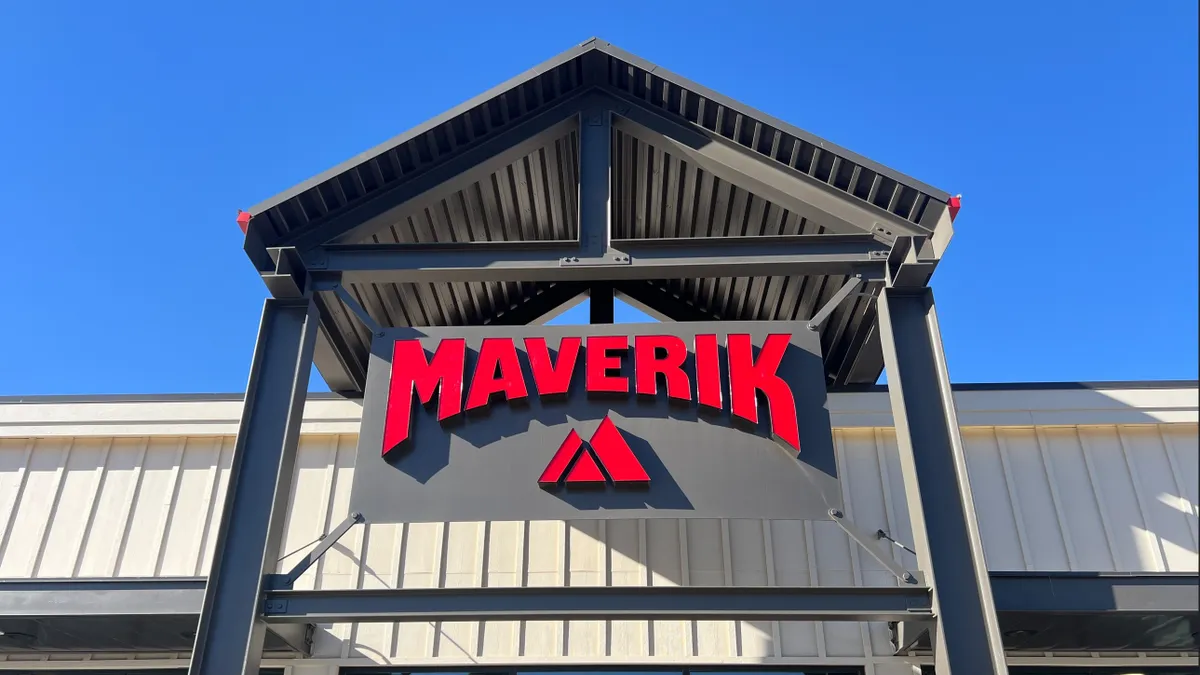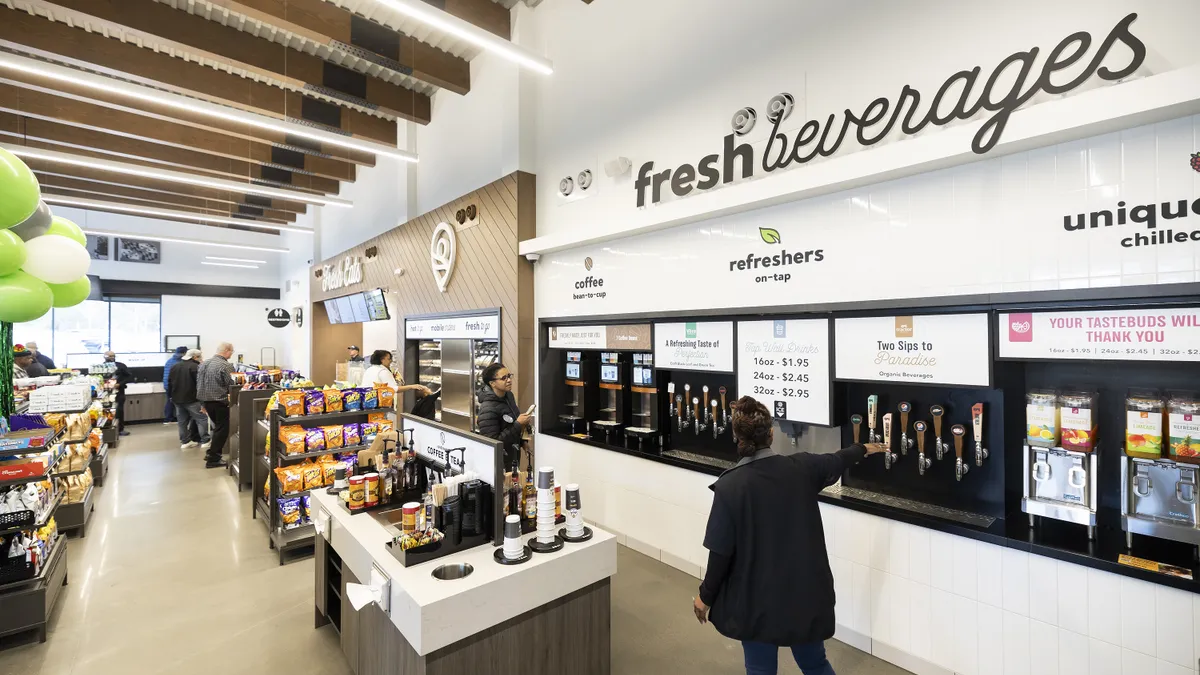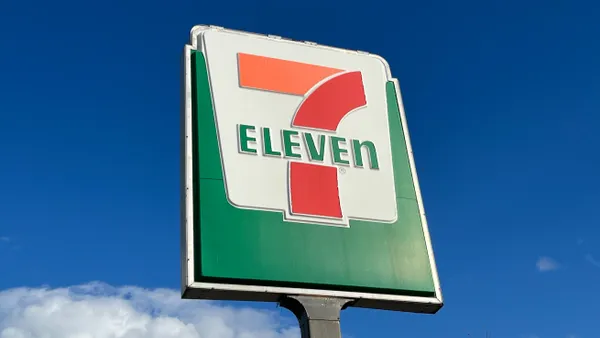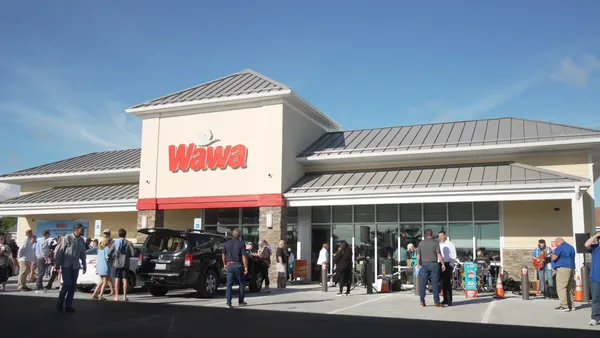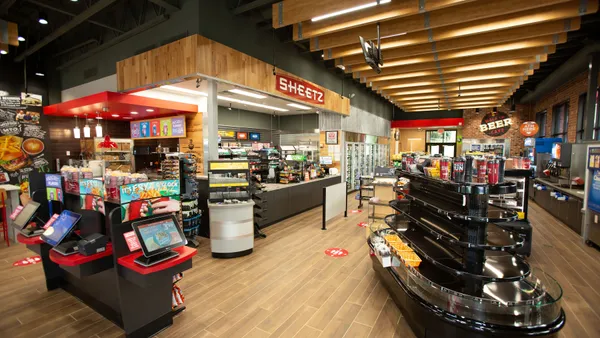Dive Brief:
- Amazon is a dominant force among retail media networks, commanding 37% market share in a space that’s estimated to be worth $100 billion, according to an analysis MediaRadar shared with sister publication Marketing Dive.
- The ad intelligence firm found Amazon attracted over 14,200 companies representing 17,000-plus brands in 2022. General mass retailers, including Walmart and Target, made up the second-largest retail media allotment, or about 36% of the market.
- Although still somewhat of an untapped resource within the convenience store industry — 7-Eleven and Casey’s General Stores are the two major players that have launched their own programs — retail media networks promise to become a breaking wave in 2023 for chains that have the ability to spend large sums on digital innovation, experts say.
Dive Insight:
Amazon is a bit of a unique player in the retail media game in serving as an e-commerce platform first. The company’s roots and scale in digital provide it with an advantage over legacy brick-and-mortar stores as brands look to wed online campaigns closer to the point of transaction, particularly as performance media receives greater attention among CPGs.
Amazon’s digital bona fides are strong enough that no competitors came close to capturing its share of retail media dollars last year, even with a wide range of companies — including behemoths like Walmart and Kroger — ramping up their network investments. Mass retailers as a vertical did not achieve Amazon’s share of the market as a standalone company.
“Amazon has such a tight grip on the digital space that they really sit in a category of their own,” said Todd Krizelman, CEO and co-founder of MediaRadar, in a statement. "Other players are growing quickly, but it will be difficult for legacy brick and mortar retailers to beat Amazon on its own terrain.”
Amazon in the fourth quarter of 2022 saw ad sales up 19% year-over-year to reach $11.6 billion. For comparison, Walmart — which has significantly expanded its retail media operations and stands as the world’s largest brick-and-mortar business — notched $2.7 billion from ads for the full year.
MediaRadar recommended that traditional retailers focus on channels where Amazon has less of an historic foothold to win over brand dollars. Those include in-store experiences, such as screen touchpoints, and email marketing, according to Krizelman.
Amazon has recently piloted email tools to help merchants better connect with existing audiences, as well as reach new ones. It’s possible such offerings could become a bigger piece of Amazon’s retail media strategy as ad sales turn into a more significant profit driver.
The top advertiser verticals on retail media networks last year were consumer electronics (15% of total spend), housewares (6%), snacks and desserts (6%), household maintenance products (5%) and furniture and decor (5%), according to MediaRadar. HP, Palmolive, Pepperidge Farm, Planters, Ritz, Epson and Starbucks were some of the top brands cited.
MediaRadar examined nearly 30 of the top retailer sites for its research. The study’s sample, which focused on display and sponsored ads across key categories, represented about $5 billion in spending, the company said. Sponsored and display ads remain some of the most popular choices for brands using retail media, though the sector has expanded into other areas, including connected TV and video, that are viewed as increasingly competitive.






